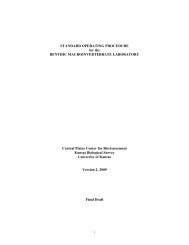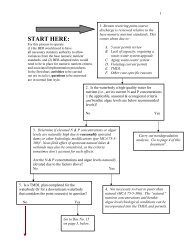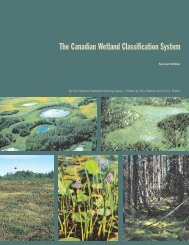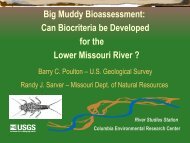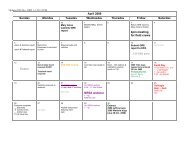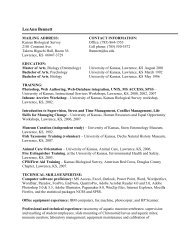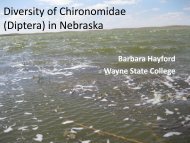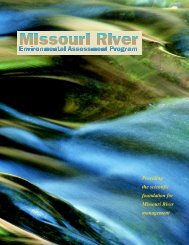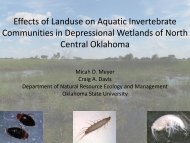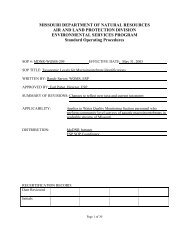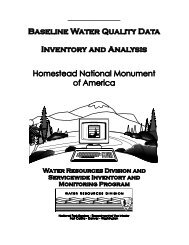Koontz, J., D.G. Huggins, C.C. Freeman, D.S. Baker - Central Plains ...
Koontz, J., D.G. Huggins, C.C. Freeman, D.S. Baker - Central Plains ...
Koontz, J., D.G. Huggins, C.C. Freeman, D.S. Baker - Central Plains ...
Create successful ePaper yourself
Turn your PDF publications into a flip-book with our unique Google optimized e-Paper software.
Figure 34. Error bar plots of mean conductivity values for samples grouped by ecoregion.<br />
CDF<br />
100<br />
90<br />
80<br />
70<br />
60<br />
50<br />
40<br />
30<br />
20<br />
10<br />
0<br />
0 0.1 0.2 0.3 0.4 0.5 0.6 0.7 0.8 0.9 1<br />
Mean Conductivity mS/cm<br />
Figure 35. Cumulative distribution frequency (CDF) of mean conductivity for reference (Phase<br />
I) and random (Phase II) populations.<br />
Mean conductivity correlated significantly with many other water quality and FQA parameters<br />
and spatio-temporal features (Table 9). If we consider that conductivity is the measure of the<br />
ionic strength of the water, then measurable concentrations of nutrients and contaminants would<br />
in theory define the ionic activity in the water (i.e. conductivity). Other correlations, though<br />
significant, may play some role in defining the conductivity, but only in as much as those<br />
parameters relate to inherent concentrations of ions measured. Herbicides levels go down as<br />
conductivity increases indicating that herbicides are not contributing to conductivity values but<br />
are merely related to conductivity levels.<br />
49 of 84<br />
Phase One<br />
Phase Two



